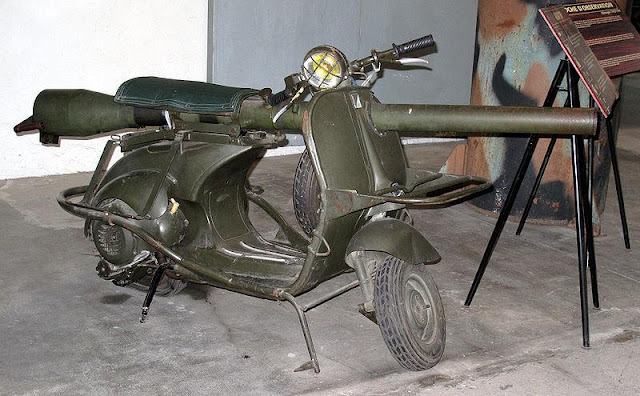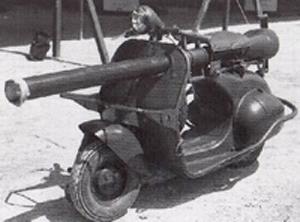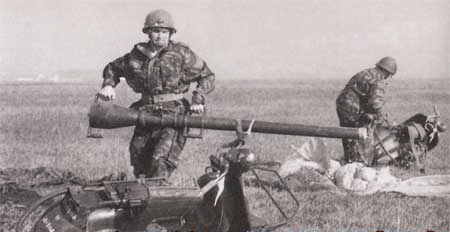 Manufacturer : Honda
Manufacturer : Honda
 Productions : 1981
Productions : 1981
 Engine : Twin cylinder Air-cooled Four-stroke, Single Over Head Cam Parallel twin.
Engine : Twin cylinder Air-cooled Four-stroke, Single Over Head Cam Parallel twin.
 Transmission : -
Transmission : -
Honda introduced several 200 cm³ bikes with similar engines but different body variations in the 1980s. The model introduced in South Africa and Pakistan was known as the CD 200 “Road Master”. It was a detuned version of the Honda CD185 twin. The CD 200 sold more for its looks then performance as its square speedometer, huge front and rear mudguards, twin chrome exhausts, neatly tucked in choke behind handle bars and a chrome plated fuel tank with the Honda logo contributed to an interesting styling.
The bike was a cheap commuter vehicle with a claimed 100 miles (160 km) per gallon and a smooth ride. Too slow for a 200 cm³ bike, its top speed was only 70 mph (112 km/h) as the engine was detuned to keep maintenance cost to a minimum. This bike targeted users who wanted a comfortable cheap transport suitable for long routes with low maintenance. Use of simple drum breaks in rear and front and a single carburetor were other measures used to keep the maintenance low. The bike accelerated hard up to 65 mph (105 km/h); after that it was a flat ride. The engine had to be revved very hard to create any kind of excitement as the bike was too heavy (140 kg) for an engine that produced a modest 16 bhp.
This model suffered from various manufacturing faults like a noisy cam chain and an unreliable electrical starter (later models were upgraded with 12 volts CDI system in the UK.). In the UK the CD200 was affected by legislation restricting learner riders to bikes limited to 125 cm³ and 12bhp. Honda introduced a 125 cm³ Benly after the CD200 was withdrawn.The CD 200 Road Master was sold in South Africa until late 2004 and was used mainly as a courier/delivery bike.It retained the 6 volt electrics and points ignition.
January 18, 2011 – 9:07 am
 Manufacturer : Toyota
Manufacturer : Toyota
 Productions : 1978-1984
Productions : 1978-1984
 Engine : 993 cc 2K I4, 1166 cc 3K I4, 1290 cc 4K I4
Engine : 993 cc 2K I4, 1166 cc 3K I4, 1290 cc 4K I4
 Transmission : K40 (4-speed manual), K50 (5-speed manual)
Transmission : K40 (4-speed manual), K50 (5-speed manual)
 Source : wikipedia.org
Source : wikipedia.org
Description : The 60 series, introduced in 1978 was better known, being the first to be extensively sold outside Japan. It was offered with 993 (KP60 2K), 1,166 (KP62 3K) and 1,290 cc (KP61 4K) engines. Three- and five-door hatchbacks were offered in export markets, although a distinctive 5-door wagon variant was sold in Japan, Hong Kong and Germany. Trim levels were Standard, De Luxe (also known as DX in some markets), GL, XL, S, and SE.
In 1980 the Starlet was facelifted to include square headlights and a second facelift followed in 1983 to incorporate a slant nose front end, and lower hatch opening.
The KP61 was the only Starlet ever sold in the USA from 1981 to 1984, and the Toyota Corolla FX replaced it in 1985. The 1981–1982 models came with standard 5-speed manual transmission and tachometer. It is an equivalent to other markets’ S model. The 1983–1984 models were additionally offered with Electronic Fuel Injection (EFI) with the 4K engine, but with 4-speed manual transmission, and similar to other markets’ XLi model.
 Manufacturer : Volkswagen
Manufacturer : Volkswagen
 Productions : 1975-1981
Productions : 1975-1981
 Engine : dohc 50 PS (37 kW) 1.043 cc
Engine : dohc 50 PS (37 kW) 1.043 cc
 Source : netcarshow.com
Source : netcarshow.com
The Mk I Polo, a rebadged version of the Audi 50, was introduced in 1975. The differences between the Audi and VW models were minor, with the Polo being cheaper and much more basic. The two cars were initially sold along side each other, but the Audi 50 never sold as well, and was withdrawn in 1978. The Polo was manufactured at the Volkswagen plant in Wolfsburg. In 1977, the Derby sedan was released, which was simply a Polo, identical to the hatchback from the C-pillar forward, with a large boot attached (an old Audi proposal, but never sold by this brand).
When first on sale the range topping car, the LS model, featured the 50 PS (37 kW) 1043 cc engine found in the Audi 50. Other specifications included parking lights, rear wash wipe, sun visors, chromed bumpers and 4.5J X 13″ wheels. The N model was the basic starting spec lacking many of the features of the LS. In 1979 the GLS was introduced, replacing the LS as the range-topping car; specification upgrades included chrome headlight and grill surrounds, sunroof, a cigarette lighter and chrome wheel trims.
read more »
January 12, 2011 – 6:28 pm
September 19, 2010 – 1:41 am
 |
| Vespa 150 TAP 1956-1959 |
Vespa 150 TAP Specifications :
Manufacturer : Piaggio (France)
Productions : 1950′s
Photo Credit : Rama and symboles-et-traditions.com
The Vespa 150 TAP is an Italian Vespa scooter modified to transport a M20 75 mm recoilless rifle, which was used in the 1950s by the French Airborne Forces (Troupes aéroportées, or TAP). It was produced by Ateliers de Construction de Motocycles et Automobiles (ACMA), a licensed assembler of Vespas in France, in 1956 and 1959.
Its mounted M20, a U.S.-made light anti-armour cannon, was very light when compared to a standard 75mm cannon but was still able to penetrate 100 mm of armour by so-called HEAT warhead. The recoil is counteracted by venting propellant gases out the rear of the weapon which eliminated the need for a mechanical recoil system or heavy mounts, enabling the weapon to be fired from the Vespa frame.
 |
| Vespa 150 TAP 1956-1959 |
 |
| Vespa 150 TAP 1956-1959 |
The scooters would be parachute-dropped in pairs, accompanied by a two-man team. The gun was carried on one scooter, while the ammunition was loaded on the other. Due to the lack of any kind of aiming devices the recoilless rifle was never designed to be fired from the scooter, the gun was mounted on a tripod which was also carried by the scooter, before being fired.
The “Bazooka Vespa” was relatively cheap: Vespas cost roughly $500 at the time, and the M20s were plentiful. Roughly 800 of these scooters were deployed in the Algerian War.
 |
| Vespa 150 TAP 1956-1959 |
Source : wikipedia.org
![]() Manufacturer : Honda
Manufacturer : Honda![]() Productions : 1981
Productions : 1981![]() Engine : Twin cylinder Air-cooled Four-stroke, Single Over Head Cam Parallel twin.
Engine : Twin cylinder Air-cooled Four-stroke, Single Over Head Cam Parallel twin.![]() Transmission : -
Transmission : -














